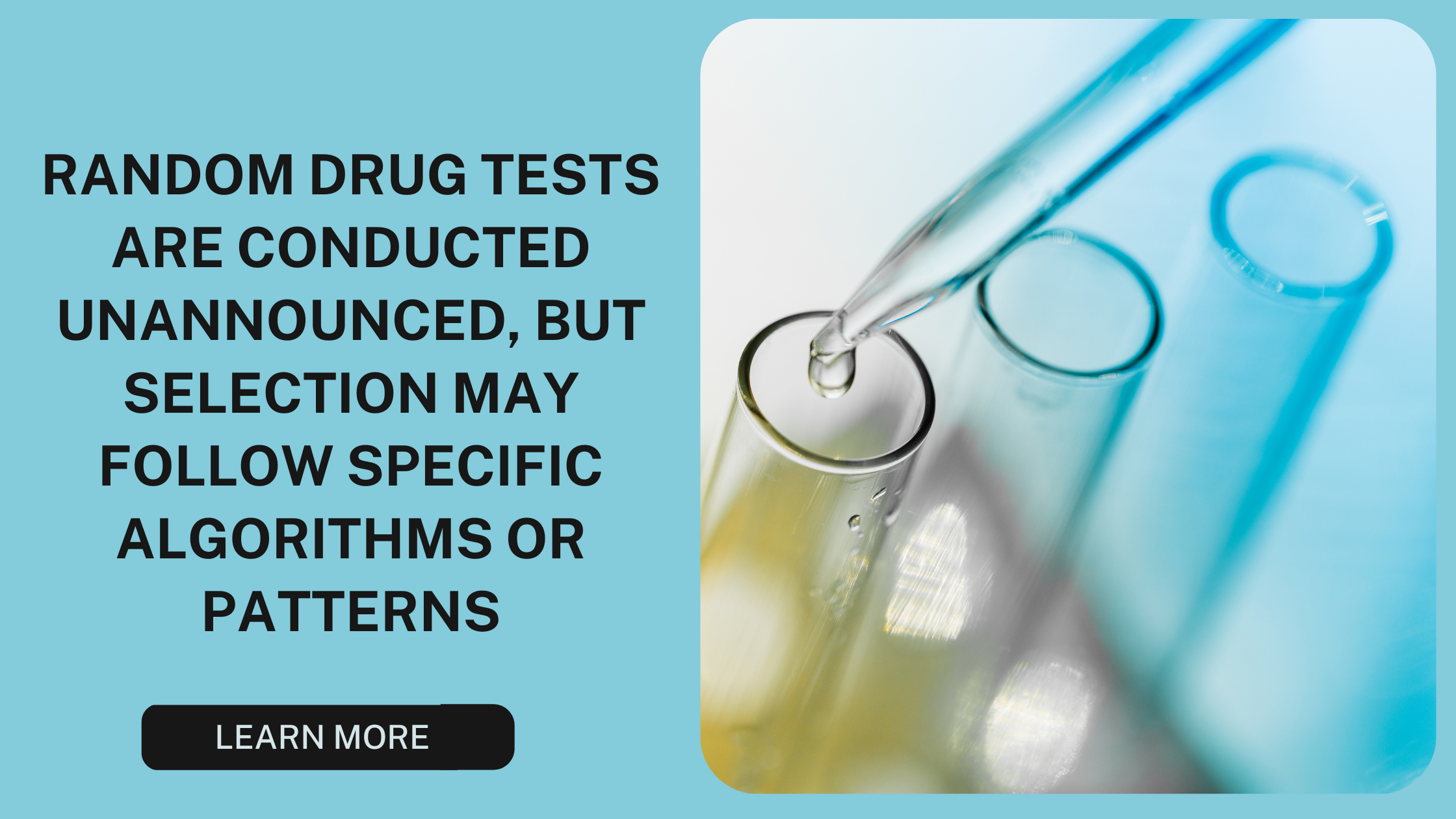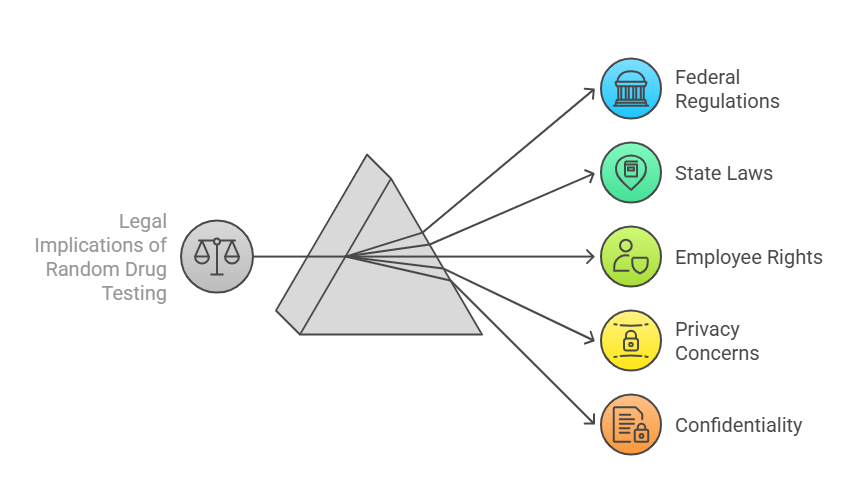Introduction to Random Drug Tests and How They Work
Random drug testing is a practice used across various industries, schools, and sports organizations to ensure that individuals are not using drugs that could impair their performance, safety, or integrity. While the concept of a “random” drug test sounds straightforward, the underlying processes and procedures behind these tests are far more complex. In this section, we will explore what random drug testing is, how it works, and the factors that influence the selection process. We will also clarify the term “random” as it relates to drug testing and discuss how organizations implement these procedures to maintain fairness and compliance.
What is a Random Drug Test?
A random drug test is designed to detect the presence of illegal substances or drugs in an individual’s system, typically through the analysis of urine, blood, or saliva samples. These tests are commonly used by employers, schools, sports teams, and other organizations to ensure a safe, drug-free environment. For employers, random drug testing helps reduce the risk of accidents, injuries, or impaired performance by employees under the influence of drugs. For schools and sports organizations, random drug tests aim to maintain fairness and promote a healthy environment free from substance abuse.
The concept of “random” refers to the idea that any individual within a specific group may be selected for a drug test at any time, without warning or predetermined schedule. In theory, this helps eliminate bias or favoritism, ensuring that all individuals have an equal chance of being tested, regardless of their behavior or background.
Why Do Organizations Use Random Drug Testing?
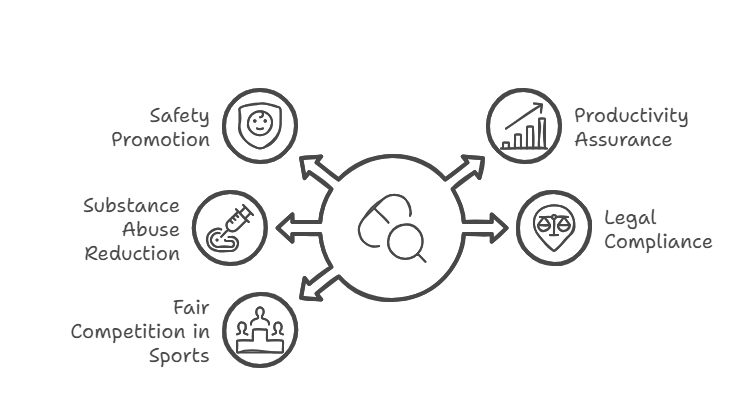
Organizations implement random drug testing to promote safety, ensure productivity, and reduce the risk of substance abuse. In some cases, drug testing is required by law, especially in industries where the safety of employees or the public is a primary concern. For example, the transportation industry mandates that commercial drivers undergo random drug testing to prevent accidents caused by impaired driving. Similarly, healthcare workers may be tested randomly to avoid the risk of administering medication or performing procedures while under the influence.
Random drug testing is also used to deter drug use within organizations. When individuals know that they could be selected for a drug test at any time, they are less likely to engage in substance abuse. In sports, random drug testing ensures that all athletes are competing on a level playing field, free from performance-enhancing substances.
For employers, drug testing serves to protect the workplace from the risks associated with substance abuse. Employees under the influence of drugs may be more prone to accidents, poor judgment, or unsafe behavior, leading to potential harm to themselves, their coworkers, and the company. Random drug testing helps identify and address these issues proactively.
How Does Random Drug Testing Work?
The selection process for random drug testing is typically designed to be impartial, aiming to prevent any unfair targeting of individuals. Employers and organizations use a variety of methods to select participants for drug testing. While these methods are intended to be random, the exact process can vary depending on the industry, organization, and applicable laws.
Random Selection Process
In the most common form of random drug testing, individuals are chosen through a computer-based selection system. A pool of individuals is created, and a random number generator selects participants from this pool. This method ensures that every member of the group has an equal chance of being selected for testing. The randomness of the selection process is designed to eliminate bias and ensure fairness for all individuals involved.
Some organizations may also use manual systems, such as drawing names from a hat or assigning numbers to individuals and selecting randomly from a list. While these methods are less common today, they are still used by certain smaller organizations or in situations where a digital system is not available.
Selection Criteria
Although the selection process is intended to be random, there are some criteria that organizations use to narrow down the pool of individuals who may be subject to drug testing. For example, some organizations may choose to conduct random drug testing only for certain job categories or positions. Individuals in safety-sensitive roles, such as truck drivers, pilots, healthcare workers, or machinery operators, are often subject to more frequent testing due to the higher risk of accidents or injuries associated with drug use.
For organizations that implement random drug testing, the specific selection criteria may vary depending on the industry, the organization’s policies, and legal requirements. While the pool of individuals may be large, the selection process is generally designed to ensure that the tests are still random for all participants within the selected group.
Frequency of Random Drug Testing
The frequency of random drug testing varies by industry, organization, and job role. Some industries, such as transportation and healthcare, may require frequent or even quarterly random drug tests to maintain safety and compliance with regulatory requirements. Other organizations may conduct random drug tests annually, or at irregular intervals.
The frequency of testing is often determined by external regulations, such as the U.S. Department of Transportation’s requirements for transportation workers. However, employers may also implement their own policies that specify how often employees are subject to testing. In some cases, individuals may be tested more often if they have a history of drug use or are in a high-risk position.
Testing Methods
Random drug testing typically involves the collection of biological samples, such as urine, blood, or saliva, which are then sent to a laboratory for analysis. Urine tests are the most commonly used method because they are non-invasive, cost-effective, and able to detect a wide range of drugs. Blood tests are less common but may be used in specific situations, such as when a person is suspected of using drugs shortly before the test.
Saliva tests are becoming more popular due to their convenience and ease of collection. They are also able to detect certain drugs more quickly after ingestion. However, saliva tests have limitations and may not detect all types of drugs as effectively as urine tests.
Each testing method has its own set of advantages and limitations, which can influence how organizations choose to implement random drug testing.
The Role of Technology in Random Drug Testing
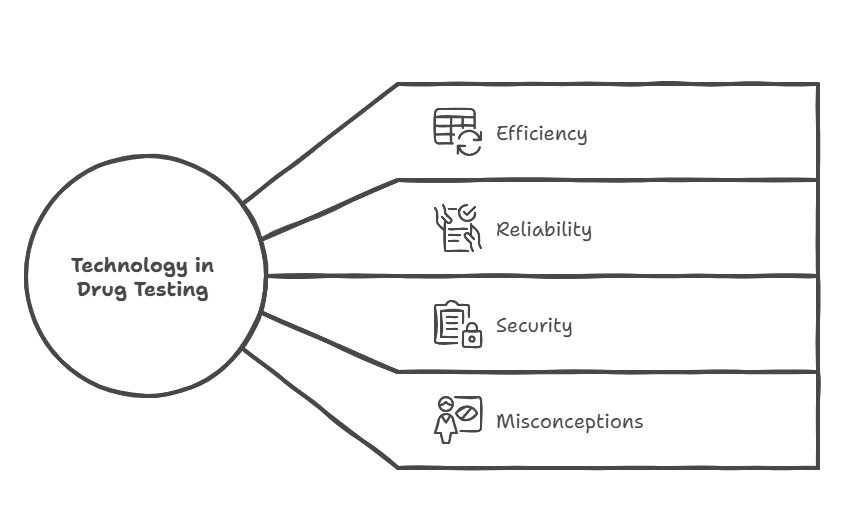
Advancements in technology have made the process of random drug testing more efficient, reliable, and secure. Many organizations now use computerized systems to generate random selections and track the results of drug tests. These systems can ensure that every individual in the pool has an equal chance of being selected and help eliminate human error or bias in the process.
Automated systems also streamline the process by eliminating the need for manual selection methods, which can be time-consuming and prone to errors. This has made random drug testing more accessible and efficient for companies and organizations of all sizes.
Misconceptions About Random Drug Testing
While random drug tests are designed to be impartial, there are several misconceptions surrounding their fairness. One common misconception is that random drug tests are entirely free from bias, but in practice, the selection process can sometimes be influenced by factors such as job role, past behavior, or perceived risk. For example, employees in safety-sensitive positions may be more likely to be selected for testing due to the potential risks associated with their role.
Additionally, some individuals may believe that they can “beat” a random drug test through detoxification methods or other tactics. However, drug testing laboratories are equipped with advanced techniques to detect tampering or adulteration of samples. These measures help ensure the integrity of the testing process and prevent individuals from circumventing the system.
Factors Affecting the Randomness of Drug Testing and How Employers Conduct These Tests
While random drug tests are designed to ensure fairness by providing equal opportunities for all employees or individuals in a group to be tested, there are several factors that can influence how “random” the selection process truly is. This section delves deeper into the practical considerations that shape the randomness of drug tests. From the nature of the job to the industry regulations, numerous variables can affect who gets tested and how often. Additionally, we will explore the procedures employers use to implement random drug testing while maintaining compliance with relevant legal standards.
Job Role and Industry Regulations
One of the primary factors that influence random drug testing is the nature of the job role and the industry in which the individual works. Certain industries and job roles carry a higher risk of safety concerns or regulatory requirements that dictate more frequent or mandatory drug testing. For example, commercial transportation and aviation industries are highly regulated, requiring regular random drug tests for employees such as truck drivers, pilots, and railroad workers. In these industries, the risk of accidents caused by impaired employees is significant, which is why employers must adhere to strict guidelines about drug testing.
The Department of Transportation (DOT) regulations, for example, mandate random drug and alcohol testing for employees in safety-sensitive positions within the transportation industry. This means that while a person in a less safety-sensitive position may have less frequent or no random drug testing at all, employees in roles such as truck drivers, pilots, or train conductors are often subjected to testing at higher frequencies.
Table 1: Example of Random Drug Testing Requirements by Industry
| Industry | Frequency of Random Drug Testing | Regulatory Body | Key Safety Concerns |
|---|---|---|---|
| Transportation | Quarterly or monthly testing | Department of Transportation (DOT) | Impairment can lead to accidents or fatalities on the road |
| Healthcare | Annual or semi-annual testing | Joint Commission for Accreditation | Impairment can impact patient safety and care |
| Construction | Random testing with high frequency during peak seasons | Occupational Safety and Health Administration (OSHA) | Risk of accidents on job sites |
| Aviation | Random drug and alcohol testing at irregular intervals | Federal Aviation Administration (FAA) | Safety hazards related to flying under the influence |
| Public Sector | Random testing based on role-specific risk factors | Various local and federal agencies | Impact on public safety, law enforcement duties |
In addition to federal regulations, state laws may require drug testing based on the nature of the work. For example, healthcare organizations may be obligated to regularly test employees who are in direct contact with patients to prevent drug-related incidents that could harm patient care.
Targeted vs. Random Testing
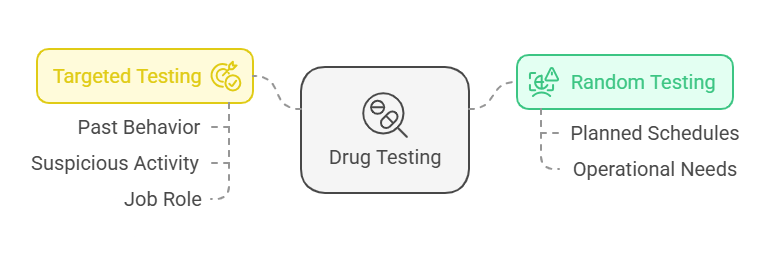
It is important to distinguish between “random” drug testing and “targeted” testing. In many workplaces, although drug tests may be referred to as “random,” they may not be entirely free from biases or patterns. Targeted testing is when individuals are selected for testing based on factors like their past behavior, suspicious activity, or the job role they hold. For instance, an employer may be more likely to test an employee who has previously failed a drug test or has exhibited behavior that suggests impairment, even though the test is still framed as “random.”
In some cases, random drug tests may be scheduled in such a way that they seem like they are conducted randomly but are actually planned in advance. For example, an employer may have a “random” testing schedule but chooses specific intervals or times of the year to conduct the tests based on operational needs. This can create an illusion of randomness, while the testing schedule is actually predetermined.
In industries with strict regulations or high-risk safety requirements, the line between “random” and “targeted” testing can sometimes blur. Employers may be required to test employees in certain roles more frequently, making their selection process appear less random to the employee.
Legal and Regulatory Requirements
Legal and regulatory frameworks are a major influence on how random drug testing is conducted. Employers must ensure that their testing practices are in line with federal, state, and industry-specific laws. For example, the Drug-Free Workplace Act of 1988 mandates that certain federal contractors and grantees maintain drug-free workplaces, which includes conducting random drug tests for employees in safety-sensitive positions. Additionally, the Fair Labor Standards Act (FLSA) may govern how and when employees are subject to testing.
Regulatory agencies, such as the Department of Transportation (DOT) and the Federal Aviation Administration (FAA), have specific rules governing the testing process for employees in high-risk industries. These regulations typically dictate how random drug tests are selected, how frequently they must be conducted, and the substances that must be tested for. In industries such as transportation, there are minimum percentages of employees who must be randomly tested each year, further narrowing the range of who may be selected.
These regulatory requirements aim to ensure that random drug tests are conducted fairly and systematically, maintaining the safety and integrity of the workplace or environment. They also establish a framework for how employers can handle violations, including consequences for employees who fail drug tests.
Employer Policies and Implementation of Random Drug Testing
Employers have the flexibility to design and implement their own random drug testing programs, as long as they comply with applicable laws and regulations. This includes determining the pool of employees to be tested, the frequency of testing, and the methods of selection. In some cases, employers may choose to use a third-party provider, such as Rapid Hire Solutions, to manage their drug testing programs and ensure compliance with relevant legal standards.
RapidHireSolutions, for example, specializes in assisting businesses with background checks and drug testing services, ensuring that employers stay within the boundaries of the law while maintaining a fair and compliant drug testing system. Their expertise helps businesses navigate the complex regulations surrounding drug testing, ensuring that the process is conducted transparently and equitably for all employees.
Many employers use an automated system to select individuals for random drug testing. This system randomly generates a list of employees from the eligible pool based on specific criteria (e.g., job role, seniority). The goal is to maintain fairness by giving all employees an equal chance of being selected, regardless of their position or behavior. This process also ensures that the tests are truly random and not influenced by other factors.
Despite these safeguards, some employees may still perceive that random drug testing is not entirely impartial. This perception is often due to the targeted nature of certain testing practices, which can be influenced by factors such as job roles, previous behavior, and safety risks.
Random Drug Testing and Privacy Concerns
While random drug testing is primarily conducted to ensure safety and compliance with workplace regulations, it also raises concerns regarding privacy and individual rights. Employees may feel that being subjected to a drug test violates their privacy or that the process is invasive. In most cases, however, employers must balance these concerns with the need to maintain a safe and drug-free workplace.
The key to addressing these concerns is ensuring that random drug tests are conducted in accordance with legal and ethical guidelines. Employers should inform employees about the drug testing policies in place, provide clear consent forms, and protect employee privacy throughout the testing process. This includes ensuring confidentiality when handling test results and protecting employees from any form of discrimination or retaliation based on the results of drug tests.

